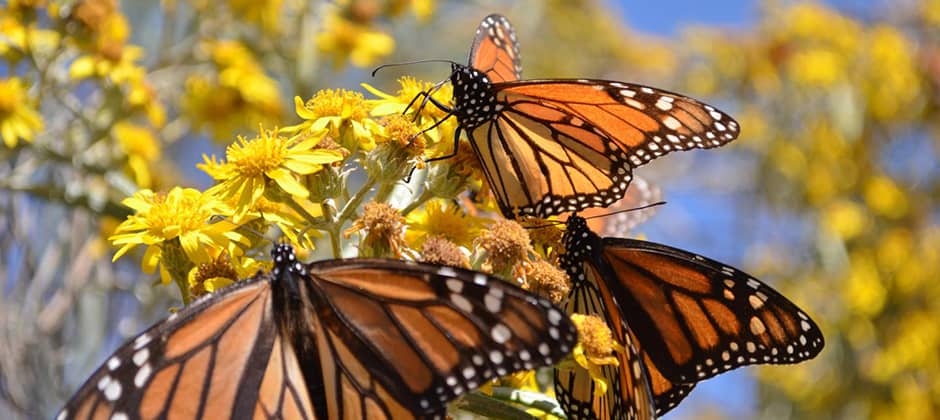Share this article
Mowing for monarchs
It may seem like taking a weed wacker to perennial grasslands where monarch butterflies (Danaus plexippus) feed on their only food source, milkweed, is not the best idea. But researchers recently found the opposite may be true.
In a study published in Biological Conservation, a team of researchers found periodically mowing grassland by Michigan roadsides, big back yards and parks in June or July actually resulted in more monarch eggs and larvae.
Monarchs have declined significantly in the Midwest in the last couple decades, said Nathan Haan, a research associate at Michigan State University and lead author of the study. Milkweed was very common in corn and soybean fields, he said, but increasing use of herbicides eliminated those plants, leaving a higher proportion of milkweed stems in perennial grasslands.
“We wanted to dig deeper and think about not just habitat loss, but also, there has probably been a habitat shift,” Haan said. He and his colleagues particularly wanted to determine how a low-intensity disturbance such as mowing affected predation rates on monarchs and how the presence of younger vegetation might affect them.
“There’s been a bunch of research in the past showing more predators and higher predation rates in grasslands than in crop fields, and we know most monarch eggs and larvae die because they’re eaten by predators,” he said. They also knew that mowing fields would bring up newer, pre-flowering milkweed stems that monarchs prefer to lay eggs on.
Haan and his colleagues divided up 23 milkweed patches. Within each patch, they left one third undisturbed for comparison and mowed down the remaining thirds in mid-June and then mid-July.
They found that when they cut down the milkweed, it would regrow a couple weeks later. After completing weekly surveys, they found about twice as many eggs on the regenerating stems in the mowed plots. Sometimes the mowed areas had as much as 10 times as many eggs as the control areas.
They also found a reduction in predator insects and spiders following the mowing disturbance. Predators took a few weeks to colonize regenerating milkweed stems, suggesting a disturbance could create a window of opportunity for monarchs to lay eggs before predators return, Haan said.
“In the long term, I think we can envision that introducing some kind of periodic disturbance to perennial grassland could greatly enhance monarch habitat we have in the Midwest,” he said. One of their partners in the project, the Michigan Department of Transportation, already mows roadsides, but if they tweak their practices to maximize the amount of milkweed that grows and then periodically disturb some of it, they may help the declining butterflies out, Haan said.
Before the team can provide any specific mowing recommendations, though, team members want to find out more about the timing of mowing and how it might affect pollinating insects and ground-nesting birds. Past research found that less mowing may actually increase bee diversity. The team also worries about creating an “ecological trap,” in which more monarch eggs mean more predation and an increased risk of disease transmission, although so far they’ve seen no sign of it.
But while he wouldn’t make any prescriptive recommendations yet, Haan said that doesn’t mean no action can be taken. “In the near term, it’s okay for managers to experiment with the type of thing that we did,” he said. “If you own some land with a couple acres of grassland and milkweed patch, for example, if someone wanted to take out a weed wacker and knock down some in the middle of June and July and leave the rest of it be, it would be a fine experiment for them to see if there are more monarch caterpillars.”
Header Image: Periodically mowing perennial grasslands may help recover monarch butterflies. ©MSU








